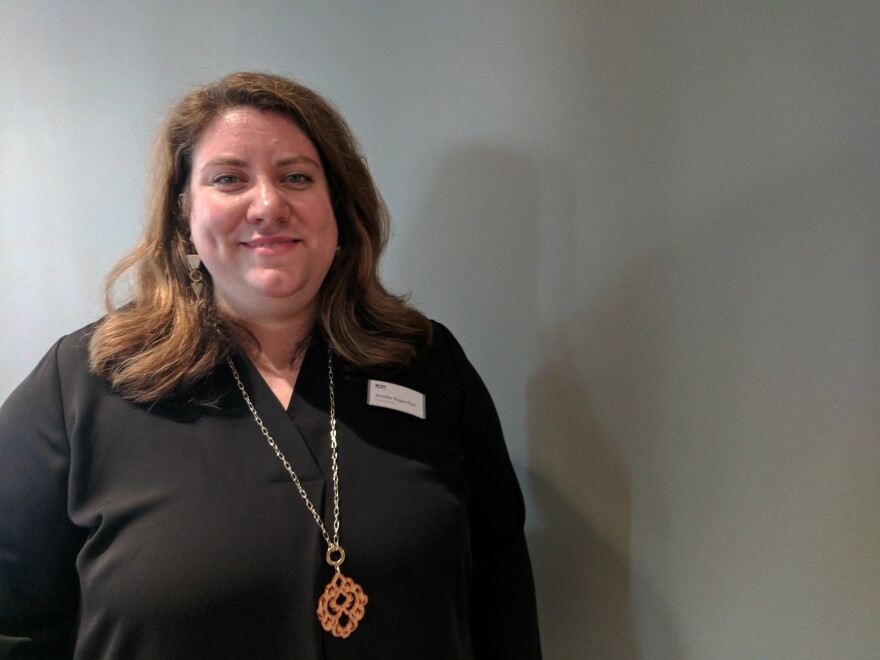It's loud in the Henry B. Gonzalez Convention Center. All weekend, thousands of teachers have been streaming in for the annual International Society for Technology in Education conference. They expect more than 15,000 educators over the multi-day event.
Since early Sunday morning, companies have been building out their rooms, or building up their booths on the convention center floor.

Gregg Stone has a temporary booth at the ISTE 2017 "Playground," a small, roped-off area away from the convention floor that will rotate vendors and educator projects in and out throughout the conference. He works for MAD-learn, a curriculum that teaches kids how to develop smartphone apps.
"I have an app up now," he says pointing to the monitor. Stone is explaining the program to 10 people.
Traynar Franklin from Baton Rouge has been watching Stone's pitch for a few minutes and asks about costs for data storage. He has to get these details nailed down because he is an education consultant for small districts that can't afford dedicated technology staffs.
He says ISTE is a rare opportunity. "So to get all this in one location and not have to travel across country is huge for us," Franklin says.
ISTE is all about educators finding tech that works and strategies that are effective, but for vendors it is about getting their tech into teachers' hands.
"It's very critical," says Dell-EMC's Jon Phillips, talking about the one-on-one time he gets at ISTE with teachers.
Teachers may not make the technology decision in a school district --that may be the administration or the office of the CIO--but they certainly impact and influence the decision. Dell's Jon Phillips
For Dell and 5,000 other vendors including Google and Microsoft, ISTE is one of the biggest opportunities they have all year.
"Teachers may not make the technology decision in a school district --that may be the administration or the office of the CIO--but they certainly impact and influence the decision," says Phillips.
The market for EdTech, like this convention, is big.
Estimates on how much U.S. schools spend range from $10 billion to over $15 billion a year. Phillips thinks the latter. A recent global analysis by IBIS Capital and EdTechXEurope predict by 2020 the world will be spending more than aquarter trillion dollars.

ISTE Chief Events Officer Jennifer Ragan-Fore says more people are attending than before, but that there is a looming question of how the Trump Administration will influence the industry.
"I think everyone is waiting to see and understand. I mean policy obviously can have a big impact," Ragan-Fore Says. But she highlights that ISTE members are aggressive about implementing things they like.
"They embrace the new, and they will find a way to bring them back to the classroom," she says.
When I got my teaching degree, my technology class was how to thread an eight millimeter projector, movie projector, in a minute and a half. - Mary Wegner
When I got my teaching degree, my technology class was how to thread an eight millimeter projector, movie projector, in a minute and a half, says Mary Wegner about how she can't reference her experience when planning for technology as Superintendent of the rural Sitka School District in Sitka, Alaska.
Sitka has around 9,000 people , 14 miles of paved road, and two stoplights. It's on an island in southeast Alaska, and a flight from the lower 48 costs more than $1000 round trip. Wegner says its isolation makes leveraging technology all the more important.
"We can connect with a scientist over a video conferencing or Skype and have real, meaningful discussions," says Wegner.
She says now they are able to partner with organizations like the Smithsonian, to access resources that the larger world has to offer, resources that until recently weren't available to her tiny community on the edge of the Pacific Ocean.



